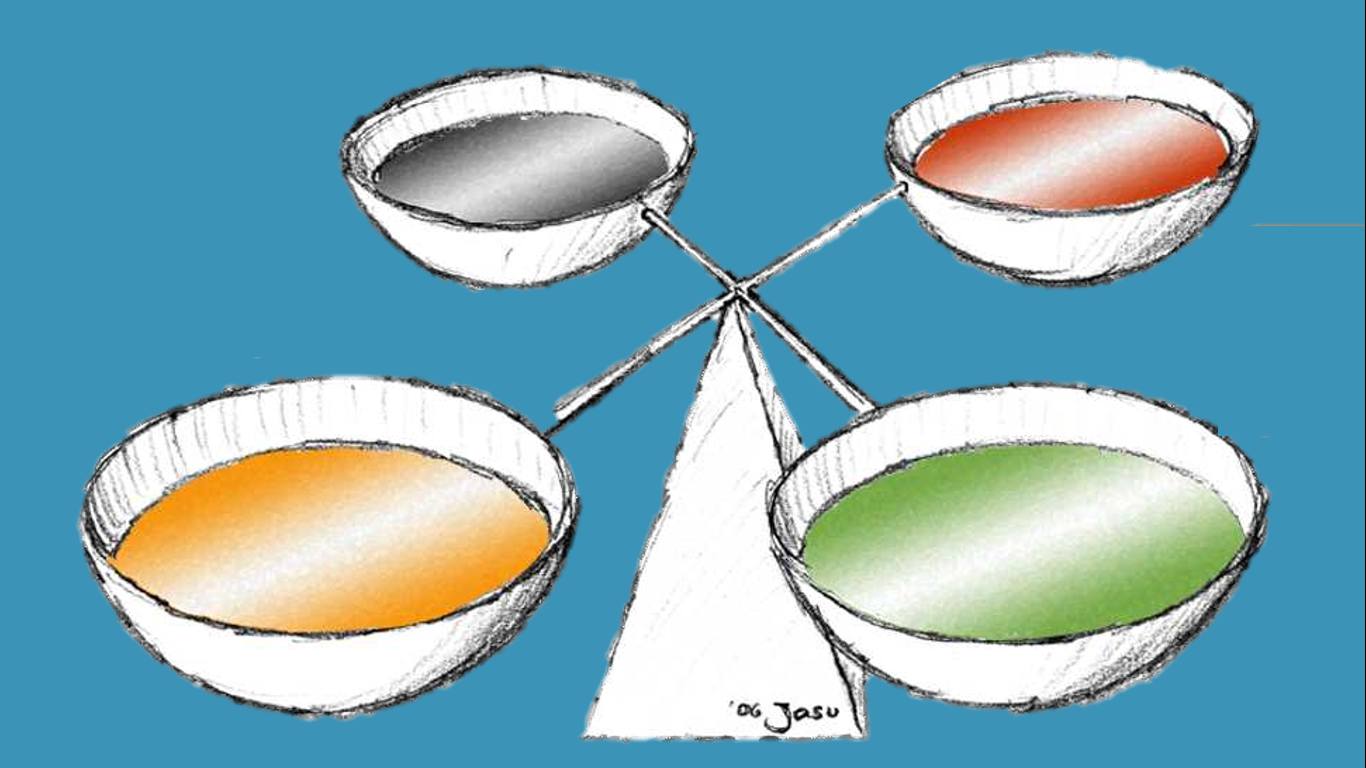Welcome back to our third podcast in our journey to discover how you can face death with joyful hope, like I do! I’m really looking forward to a wonderful future after death and so can you!
In the previous podcast I told you a story about Dr Semmelweis and his amazing discovery before people understood about germs. In his situation, as he was in charge of a maternity unit, he couldn’t understand why so many pregnant ladies died in their particular maternity unit, and it was actually because the doctors examined the corpses of people who had died and didn’t wash their hands before they went on to the ladies, and they carried the bacteria on their hands to the ladies, and that infected them and they died. So he discovered that, by washing his hands by using bleach solution before going onto the ladies, that very few of the ladies died.
Well, these days we think of this as basic hygiene, but for them this was a brand new idea and it really worked! It saved many lives, and you would think that that discovery would just spread like wildfire right across Europe…
But many people, prominent people did not believe him or follow his ideas and people continued to die!
Why was that? Well, actually because they believed a pack of lies, and in the same way, if I tell you the truth, you likely won’t believe because of the things that you have been told which are not true, because of the lies that you have been told. If I told you the truth right now you probably say, “Stupid old geezer!” and just turn me off. But I hope you’ll stay with me; it’s really worth it to be able to face death without fear!
Let’s come back to Semmelweis’ discovery. What was this accepted fiction which obscured the truth so that they couldn’t see it? Well one of the most important ideas was this: all the doctors were taught that a person’s health is primarily determined by the balance of the four body fluids: blood, phlegm, yellow bile and black bile.
Now to illustrate that, if you think of a children’s seesaw in a park, but not with just one plank but with two beams – the second crossways – so you have four, all pivoted on a point in the middle. And let’s say you could put a bowl on the end of each plank where maybe a child would normally sit on the seesaw, and you put into these these four fluids, and they have to be kept in balance otherwise you get sick.
Well, it was very complicated, and doctors in their training spent years studying it. As far as they knew, this was real science, and they would assume that, of course, those ladies who died had their fluids out of balance!
The easiest one, actually, to adjust was blood; they would reckon that someone has too much blood! A very common treatment was to drain some blood from the body. It was called bloodletting, but actually made the patients weaker and drained away their blood which carried oxygen and contained antibodies and things to fight diseases, so it made them weaker!
But they didn’t know! This has been a very ancient practice; this had been the “truth” for 2300 years – even the ancient Greeks “knew” about it!
Well, not all reckoned that imbalance was the cause of this fever that the ladies were getting; other reasons were given as well. One very prominent doctor claimed that it was uncleanliness of the bowel, and so they would try to get the bowels emptied out, which wasn’t very pleasant and only made them weaker, not stronger!
They really had no idea of the truth, and the ladies died! Apparently the most common reason for the deaths of these ladies in the hospitals in that type of situation was most likely streptococcus bacteria which is easily killed by bleach.
Dr Sommerweis followed a clue and discovered this life-saving cure; he discovered the truth. He couldn’t explain how it happened, but the ladies had been dying because most of the doctors believed lies.
Others said about his work,
“We are scientists! We don’t believe in magic! You look at Semmelweis – he says that these corpse particles might turn a person into a corpse just by touching! No explanation how. What a superstitious story! We don’t believe in that sort of thing – what a load of rubbish! We’re not stupid!”
Actually bacteria had been discovered in the microscope over 100 years before, but they made no connection between the two.
So, many of the medical establishment, many of them across Europe said,
“What a load of rubbish!” and people laughed at him.
So what were really the reasons for rejection? Well, first of all Semmelweis could not offer any acceptable scientific explanation on why washing ones hands with bleach worked. You see, the germ theory of disease hadn’t been established yet, and wouldn’t be for another 20 years.
And some doctors were just plain offended at the suggestion that they should wash their hands…
“I mean, after all, we doctors are gentlemen, aren’t we? How could our hands be dirty!”
Now we know that this theory about the balance of fluids in the body is actually a load of rubbish, but they fervently believed it and people died.
The fact that hand washing with a bleach solution stops transmission of disease was a fact but they laughed at it.
To be fair there were a few people across Europe who listened and followed but the majority ignored him or directly opposed him.
Well, his work contract came to an end; he was still in his early thirties, and he reapplied. He’d made such huge advances, one would have thought that this was a great future ahead for this man. What would he do next?
But his renewal request was turned down by the director. The director appointed somebody else to the job, and most of the medical establishment turned against him and they blocked his normal career path. They didn’t recognise that he was a great scientist, a great doctor, not at all.
He grew he grew increasingly desperate to help doctors to see how to save lives but most people didn’t listen. He was so passionate about this, people thought he gone insane. Eventually he was trapped in a mental asylum and he died there a short time later, likely from being beaten.
Did anyone know how to prevent disease from spreading at that time – did anyone know?
You might say,
“Well, of course not, cause the science hadn’t got that far yet, not before Semmelweis.”
And you might think, “Well, isn’t that wonderful! This is science for you. This just proves that real science is the real source of truth.”
In lots of ways I agree with you, that science is extremely important, and being a scientist myself I love to hear about new discoveries. But is science the only source of knowledge? Is science the only source of helpful knowledge?
And that is a big question I want to ask you. Did no one at that time know how to treat dead bodies to prevent disease from spreading, before Semmelweis?
Well, you might think well of course not because the science hadn’t got that far yet; Semmelweis was the one that discovered it.
Well, does that mean that it could not be known before then, before the scientific experiments were done?
Well, you might ask,
“Well, how could people know?”
Let me tell you about something. There exists a document with a set of quite a few hygiene rules, and I’ve picked out three of them. Listen to them.
From this section on disease control it says,
“Whoever touches a human corpse will be contaminated for seven days” (and so live in a separate place – that’s what we now call “social distancing”, isn’t it?) “They must purify themselves with water on the third day and on the 7th day, then they will be clean.”
Now remember these people didn’t have bleach water, they just had water, okay?
I’ll read on.
“But if they do not purify themselves on the 3rd and 7th days, they will not be clean. If those who are unclean do not purify themselves, they must be cut off from the community.” In other words, they’d be kicked out! They had to obey these rules; they had to purify themselves otherwise they kicked out of the community. They wouldn’t be able to go home and join their rejoin their families and things.
Well, does this sound like a good rule? Yes or No? I think you’d probably say “Yes”, wouldn’t you?
Well there’s another rule:
“Each of you must have a spade as part of your equipment. Whenever you relieve yourself, dig a hole with a spade and cover the excrement.”
Does that sound like a good rule? Yes, or no?
We might say,
“Well, this obviously is basic hygiene!”
“Well, you might be surprised that I actually lived with a people for whom it was not obvious. I was living amongst them about 25 years ago, and they did learn, but they didn’t know it before then!
Here’s another rule:
“Any bed a man with a discharge lies on will be unclean, and anything he sits on will be unclean. Anyone who touches his bed must wash their clothes and bathe in water, and they will be unclean until evening. Whoever sits on anything that the man with the discharge sat on must wash their clothes and bathe with water and they will be unclean until evening.”
Well, does that sound like a good rule? Yes, or no?
So, would you say that these three rules are good rules? Would you think that they come from someone who knows that germs cause disease, and how to prevent the spread? What’s your answer? Yes, or no? I’ll repeat the question: do you think they come from someone who knows that germs cause disease and how to prevent the spread? Yes, or no? Now you decide, and I want you to remember your decision, it’s very important.
Okay now the next question I’m going to ask you is this: when do you think they were written? 1930? 1910? 1880? 1860? 1400? 10BC? 1500BC? What do you think? Which of those dates might be correct?
Well, Semmelweis discovered about hand washing using bleach in 1847, so it obviously couldn’t be before that, could it? Well, one suggestion might be that this was in a manual written by Florence Nightingale in about 1880. That sounds very reasonable doesn’t it? Germ theory was just beginning to be accepted – couldn’t be much before that could it?
Well, think about this, here’s some more of the rules:
“You should avoid eating meat from various creatures or types of creatures because they are considered contaminated, and these include (I’m just taking some examples): bats, vultures, dogs, chimps, rats, cats, camels and pigs. That’s just a selection.
Well it so happens that HIV-AIDS is thought to have come from chimps, chimps are on the list. Ebola is thought to have come from bats, and bats were on the list. SARS is thought to have come from civets, a type of wild cat, so they were on the list. Spanish flu from pigs, the Black Death from bats, Hong Kong flu from dogs, MERS from bats or camels, Asian flu from pigs or dogs, Swine flu from pigs, and COVID-19… it’s likely to be bats. As I speak to you now we’re in the middle of that and that is the last guess by the World Health Organisation.
And these diseases have killed millions and millions of people, all of them come from that list of animals that no one should eat! One wonders if any of these epidemics might have happened if people had kept to those rules…
Well, does that help you to decide when the rules were written? Does that make it earlier or later? Oh… really sounds quite up to date, doesn’t it?
Well here’s a fact that might really surprise you. There is this one minority group in Eastern Europe who lived according to these hygiene rules and they lived on average about 10 years more than the people around them. So, for example, if the average age at death was say 45, this group averaged 55. So when do you think that was? It was in the 1700s and 1800s, mostly before Semmelweis’ discovery – they already knew those rules!
At one time there was this terrible pandemic that swept across Europe and millions died in that pandemic – the same minority group which had these rules had a much lower death rate than the rest of the population. Why? Well, researchers believe that because they followed the rules of their group, some of which I cited just now, they routinely wash their hands and followed procedures, had a bath and washed their clothes, kept away from others, especially after touching a dead body…
When was that? That was the Black Death in the 1300s! This was 500 years before Semmelweis, they already had those rules! You see this was long, long before the scientific era. The scientific area had barely started when Semmelweis lived, but they were known a long time before experimental science and observation ruled as a way of searching out for the truth!
Earlier I asked you this question: Do you think these rules came from someone who knows about germs and causing disease and how to prevent the spread? What was your answer – yes? or no? If you think that the person did know at least 700 years ago? That raises the question,
“How could they know before anyone discovered it? How could they? How could they have known it way back then at the time of the Black Death in the 1300s?
If I tell you that there are some documents which exists now documents written about the time of Christ which included that puts it back to 2000 years and those documents were likely copies of documents that were written 15 centuries before that! So that means that these rules these hygiene rules were from well over 3000 years ago – well, at least 2000 years ago! How could they have known these things?
You know, in our day we tend to think that we cannot know things unless science tells us. Is that true? Can there be another source of knowledge which is not from experimental science? I’d like you to think about it and we’ll look at it again in the next podcast.
I believe there is another source of knowledge, and it is knowledge from that source that can give us the confidence that we can have great hope for our life after we die, that we can face death now with joyful hope of a wonderful future!
I hope you’ll join me in the next podcast!
Bye



